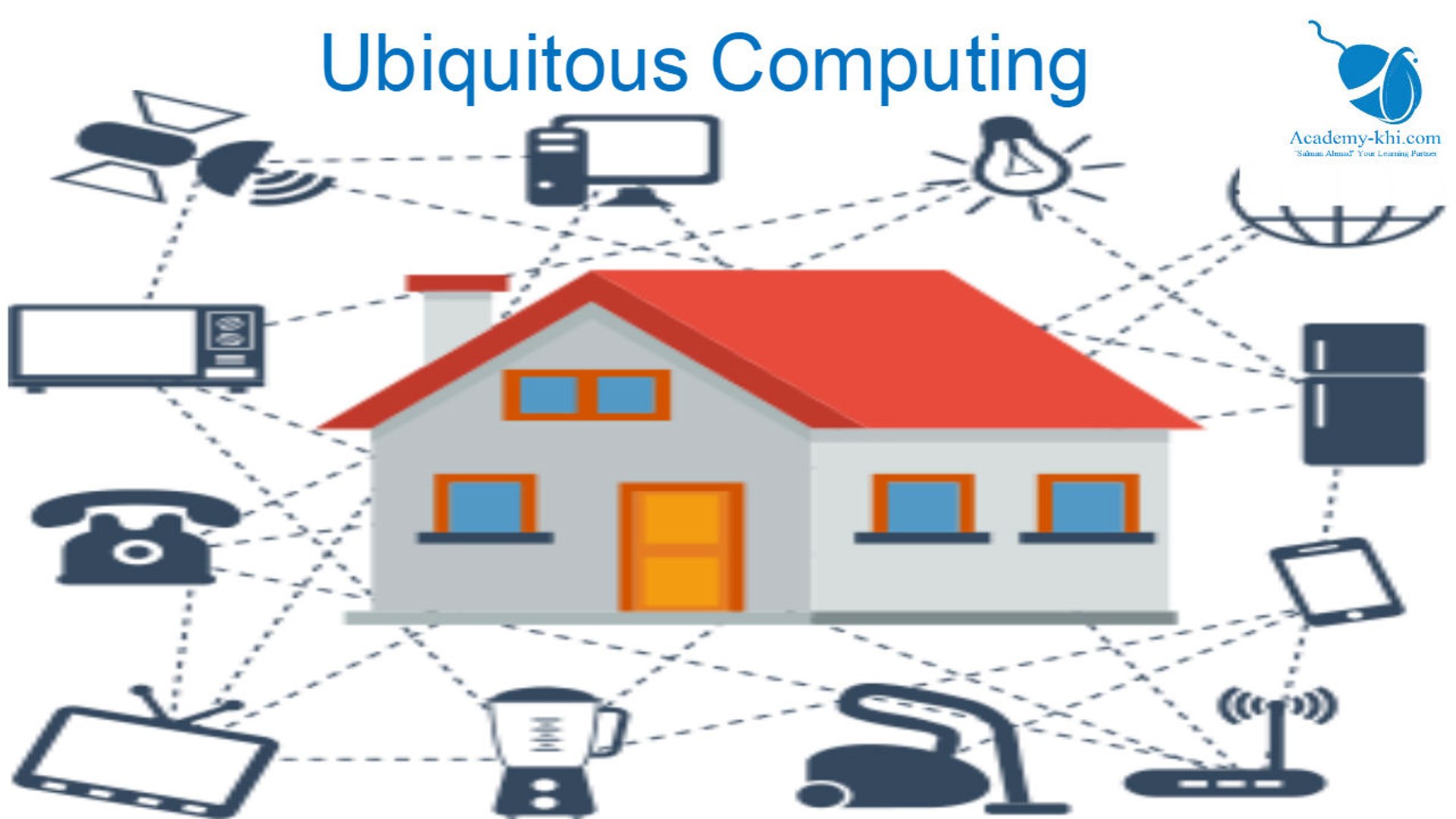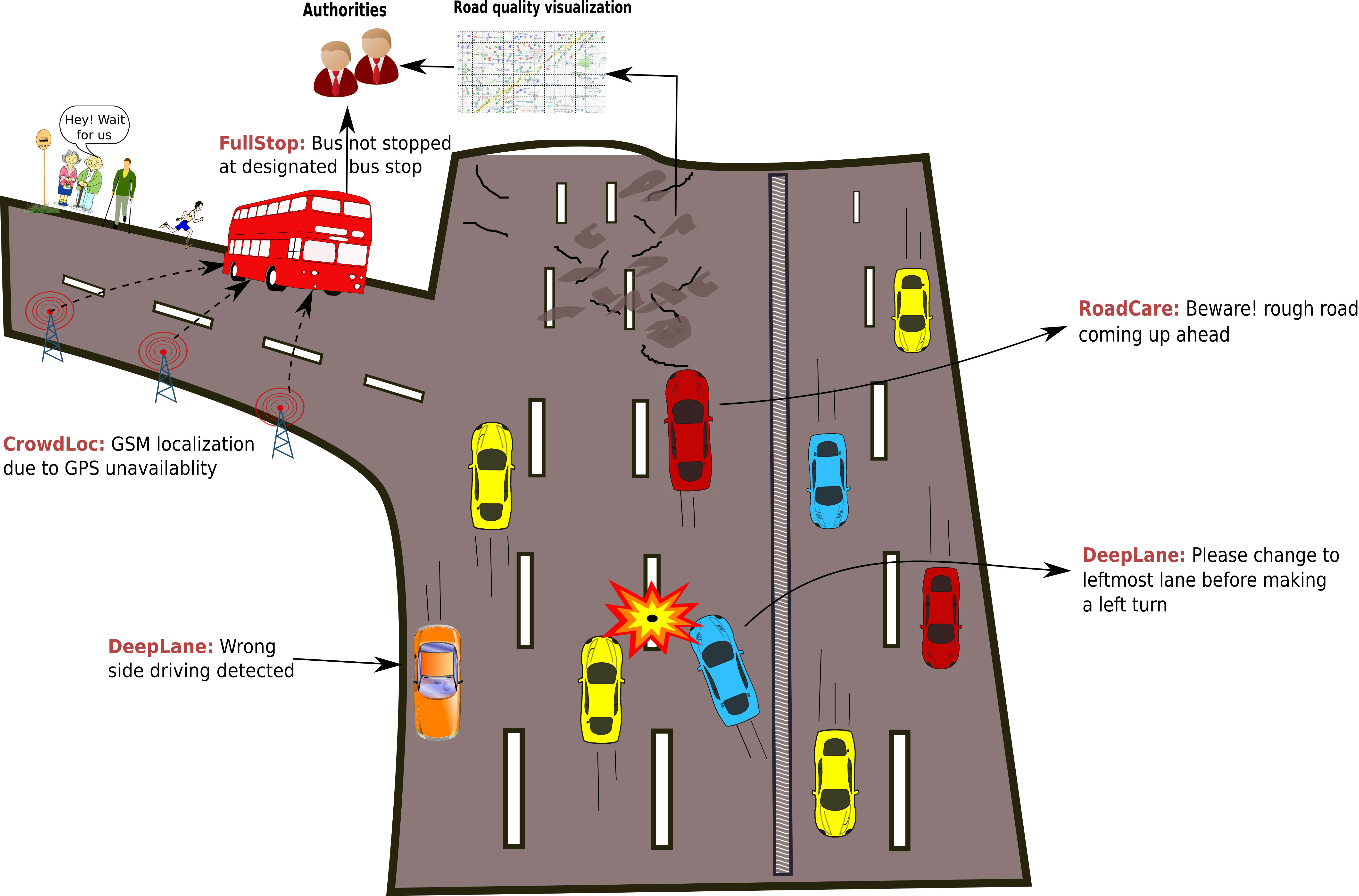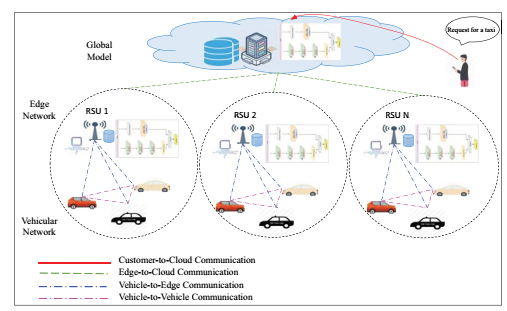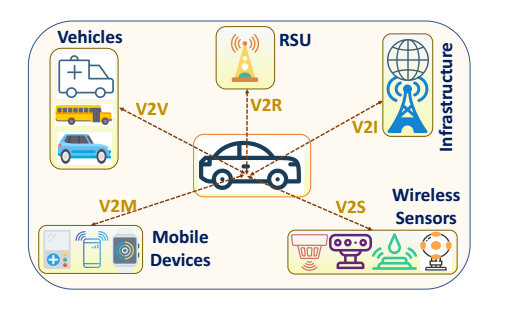Research
Our primary goal is to work in some of the emrging areas of computing systems. Broadly we keep an inter-disciplinary outlook where we attempt to solve problems that can potentially translate to products and devices. We aim for these products to be low cost, and marketable to the general population of the country.
Our goals are pursued by a team of faculty members who have diverse experience in the general area of computing systems. The faculty and students work in a close synergy with the industry towards producing tranlational research.
Here are some of the thematic areas and techniques that we currently work on:
Computer Architectures
 In SINC lab we are currently involved in driving research towards designing next generation of IoT devices, low power memories, emerging memory technolgoies, and accelerated machine learning. Evolution of machine learning and IoT has significantly increased the demand for hardware support in execution of applications that pertains to specific applications in the said domains. We are currently involved at both systems level and circuit level designing for such next generation hardware through VLSI design, fabless design, and use of CAD tools.
In SINC lab we are currently involved in driving research towards designing next generation of IoT devices, low power memories, emerging memory technolgoies, and accelerated machine learning. Evolution of machine learning and IoT has significantly increased the demand for hardware support in execution of applications that pertains to specific applications in the said domains. We are currently involved at both systems level and circuit level designing for such next generation hardware through VLSI design, fabless design, and use of CAD tools.
Research on Ubiquitous Computing
 The vision of Ubiquitous Computing lies in the capacity of embedding the ‘computing’ into the objects scattered around our surroundings in a way to make the whole existence invisible t0 human perception. The domain of ubiquitous or pervasive computing comprises a lot of inputs from sensors and sensing, mobile computing, communication perspective, ML/AI driven data analytics and so on. In this group we focus on various problems in the domain including activity recognition, sentiment/behavior analysis, indoor localization, remote health monitoring, and ambient living to name a few. IoT security and data privacy, low-power communication, on-device computation, edge/fog supported in-network data processing, analysis of multimodal sensory data and mobility management are few challenges that we are closely pursuing to address the specified problems. Our research group is highly exposed to multidisciplinary collaborative research pursuing both the channels with Industry and Academia across the globe and is actively engaged in various research activities covering the disruptive technologies like Blockchain, Federated Learning, Industry 4.0, and Digital Twin.
The vision of Ubiquitous Computing lies in the capacity of embedding the ‘computing’ into the objects scattered around our surroundings in a way to make the whole existence invisible t0 human perception. The domain of ubiquitous or pervasive computing comprises a lot of inputs from sensors and sensing, mobile computing, communication perspective, ML/AI driven data analytics and so on. In this group we focus on various problems in the domain including activity recognition, sentiment/behavior analysis, indoor localization, remote health monitoring, and ambient living to name a few. IoT security and data privacy, low-power communication, on-device computation, edge/fog supported in-network data processing, analysis of multimodal sensory data and mobility management are few challenges that we are closely pursuing to address the specified problems. Our research group is highly exposed to multidisciplinary collaborative research pursuing both the channels with Industry and Academia across the globe and is actively engaged in various research activities covering the disruptive technologies like Blockchain, Federated Learning, Industry 4.0, and Digital Twin.
Mobile Systems research

Mobile Systems research at SINC Lab focuses on mobile communication and software. Under this vertical, the aim is to largely develop systems involving mobile devices for solving Socio-technical problems. There are a plethora of problems in this domain, ranging from Driver and Driving behaviour to monitoring the road and environment. This clubbed with Indoor and Outdoor localization strategies, AI/ML techniques, and robust evaluation gives an end-to-end system worthy of being deployed in real-world settings. Along with this, we also look towards leveraging 5G and beyond technologies in the context of smart cities and healthcare. The Mobile Systems vertical of the group has ongoing collaborations with the Industry and Academia alike as well as tie-ups with the Faculty members within and across the department pursuing multi-disciplinary collaborative research.
Toward Next Generation of Blockchain Using Improvized Bitcoin-NG
 The Bitcoin-Next Generation (NG) is a new blockchain protocol that is designed to scale the efficiency in terms of throughput and delay. Bitcoin-NG is a Byzantine fault-tolerant blockchain protocol( shown in Figure 1) robust to extreme churn and shares the same trust model as Bitcoin. Researchers are trying to extend their applications by integrating them with existing technologies, such as the Internet of Things (IoT). However, due to high computational power and high consensus delay, current blockchain protocols, such as Bitcoin, are not suitable for working with lightweight IoT devices. Moreover, they are not energy-efficient as the mining of blocks requires dedicated mining machines that consume electricity. However, protocols, such as Bitcoin-NG, are designed to reduce the consensus delay, but they still need high computational power and high energy. This article proposes a new mechanism for blockchain to reduce the consensus delay, reduce energy consumption, and increase the throughput by introducing a new leader election scheme in the blockchain.
The Bitcoin-Next Generation (NG) is a new blockchain protocol that is designed to scale the efficiency in terms of throughput and delay. Bitcoin-NG is a Byzantine fault-tolerant blockchain protocol( shown in Figure 1) robust to extreme churn and shares the same trust model as Bitcoin. Researchers are trying to extend their applications by integrating them with existing technologies, such as the Internet of Things (IoT). However, due to high computational power and high consensus delay, current blockchain protocols, such as Bitcoin, are not suitable for working with lightweight IoT devices. Moreover, they are not energy-efficient as the mining of blocks requires dedicated mining machines that consume electricity. However, protocols, such as Bitcoin-NG, are designed to reduce the consensus delay, but they still need high computational power and high energy. This article proposes a new mechanism for blockchain to reduce the consensus delay, reduce energy consumption, and increase the throughput by introducing a new leader election scheme in the blockchain.
Vehicular Edge Computing Based Driver Recommendation System Using Federated Learning
 Driver Stress and Behavior prediction is a significant feature of the Advanced Driver Assistance System. This system can improve driving safety by alerting the driver to the danger of unsafe or risky driving conditions. In this paper, we analyzed historical trip data to calculate the driving stress and its impact on different driving behavior. We used Long Short-Term Memory Fully Convolutional Network to predict the corresponding stress level of the driver. We further established a relationship between stress and driving behavior and developed an intelligent recommendation system for cab companies to recommend the driver for a subsequent trip. To meet the demand for Artificial Intelligence in the Intelligent Transportation System, we leverage Federated Learning in Vehicular Edge Computing in the proposed system architecture ( shown in Figure 2). It enables Road Side Units to do all computing of data on it. The model has been tested on the UAH-DriveSet dataset. We observed that the proposed model predicts the stress with an accuracy of 95% and assists in enhancing the driving quality and experience.
Driver Stress and Behavior prediction is a significant feature of the Advanced Driver Assistance System. This system can improve driving safety by alerting the driver to the danger of unsafe or risky driving conditions. In this paper, we analyzed historical trip data to calculate the driving stress and its impact on different driving behavior. We used Long Short-Term Memory Fully Convolutional Network to predict the corresponding stress level of the driver. We further established a relationship between stress and driving behavior and developed an intelligent recommendation system for cab companies to recommend the driver for a subsequent trip. To meet the demand for Artificial Intelligence in the Intelligent Transportation System, we leverage Federated Learning in Vehicular Edge Computing in the proposed system architecture ( shown in Figure 2). It enables Road Side Units to do all computing of data on it. The model has been tested on the UAH-DriveSet dataset. We observed that the proposed model predicts the stress with an accuracy of 95% and assists in enhancing the driving quality and experience.
Secure and Energy-Efficient Message Communication Protocols for Internet of Vehicles
 The Internet of Vehicles (IoV) offers an emerging paradigm that deals with interconnected vehicles interacting with the infrastructure, roadside units (RSUs), sensors, and mobile devices with a goal to sense, compute, store, and transmit vital information or data over a common channel while vehicles are moving. Secure and reliable communication and efficient ondevice performance are thus crucial challenges in this paradigm, particularly in presence of limited computation resources. This paper presents a novel secure and energy-efficient message communication system, called MComIoV, using a one-way hash function and elliptic curve cryptography (ECC). We evaluate MComIoV through security proof and analysis against various attacks and verify its robustness. The proposed system is also implemented and tested on Raspberry Pi 3B+. Experimental results demonstrate the efficiency in computation time, storage cost, communication overhead, and energy consumption.
The Internet of Vehicles (IoV) offers an emerging paradigm that deals with interconnected vehicles interacting with the infrastructure, roadside units (RSUs), sensors, and mobile devices with a goal to sense, compute, store, and transmit vital information or data over a common channel while vehicles are moving. Secure and reliable communication and efficient ondevice performance are thus crucial challenges in this paradigm, particularly in presence of limited computation resources. This paper presents a novel secure and energy-efficient message communication system, called MComIoV, using a one-way hash function and elliptic curve cryptography (ECC). We evaluate MComIoV through security proof and analysis against various attacks and verify its robustness. The proposed system is also implemented and tested on Raspberry Pi 3B+. Experimental results demonstrate the efficiency in computation time, storage cost, communication overhead, and energy consumption.
High Performance Computing (HPC) research
 HPC is the de-facto technology used for fast computing in applications which involve massive volumes of data and requires multiple computers to work toegether towards executing an algorithm. In SINC lab we are mostly looking at problems involving several data-centric applications specifically in the domain of large graphs, social network analysis, and data mining. HPC typically involves significant use of modern multi-core processors such as multi-core CPUs, and many-core processors such as GPUs which play a critical role in accelerating the execution. Research typically entails devising algorithms for parallel and distributed comptuing, data partitioning, distribution, communication among processors, consolodation, and synchronization. Specific problems of current interest lies in the areas of massive graph analytics, dynamic graphs, designing of efficien runtimes for generic data minign problems, exploitation of HPC hardwre features, and heterogeneity.
HPC is the de-facto technology used for fast computing in applications which involve massive volumes of data and requires multiple computers to work toegether towards executing an algorithm. In SINC lab we are mostly looking at problems involving several data-centric applications specifically in the domain of large graphs, social network analysis, and data mining. HPC typically involves significant use of modern multi-core processors such as multi-core CPUs, and many-core processors such as GPUs which play a critical role in accelerating the execution. Research typically entails devising algorithms for parallel and distributed comptuing, data partitioning, distribution, communication among processors, consolodation, and synchronization. Specific problems of current interest lies in the areas of massive graph analytics, dynamic graphs, designing of efficien runtimes for generic data minign problems, exploitation of HPC hardwre features, and heterogeneity.